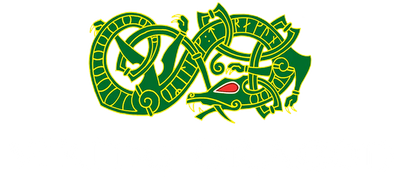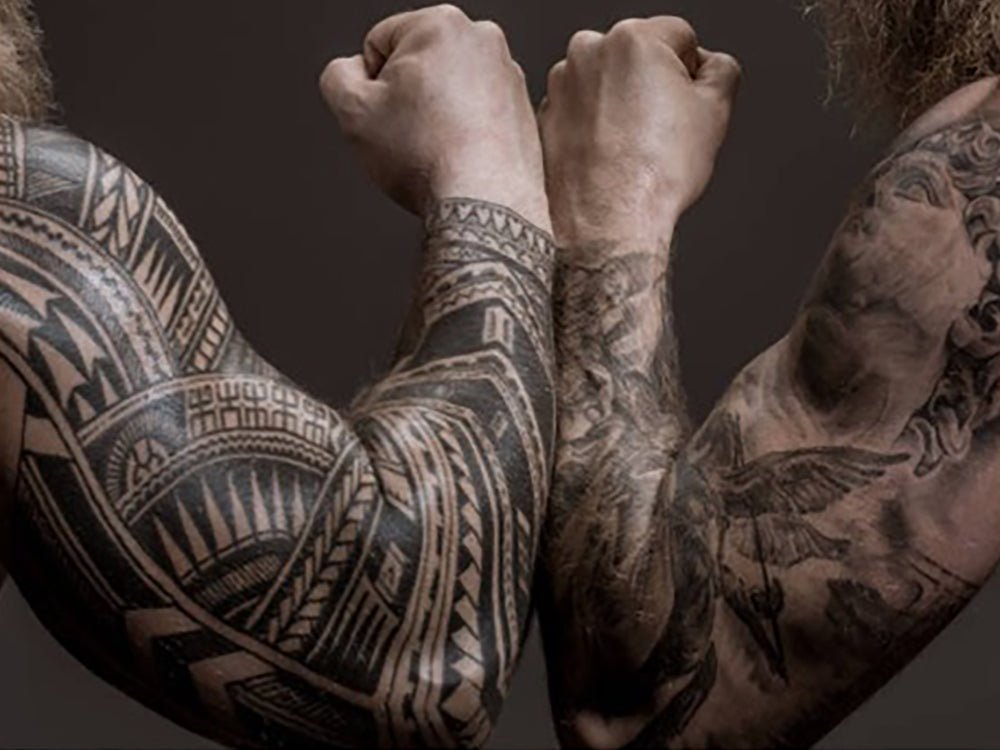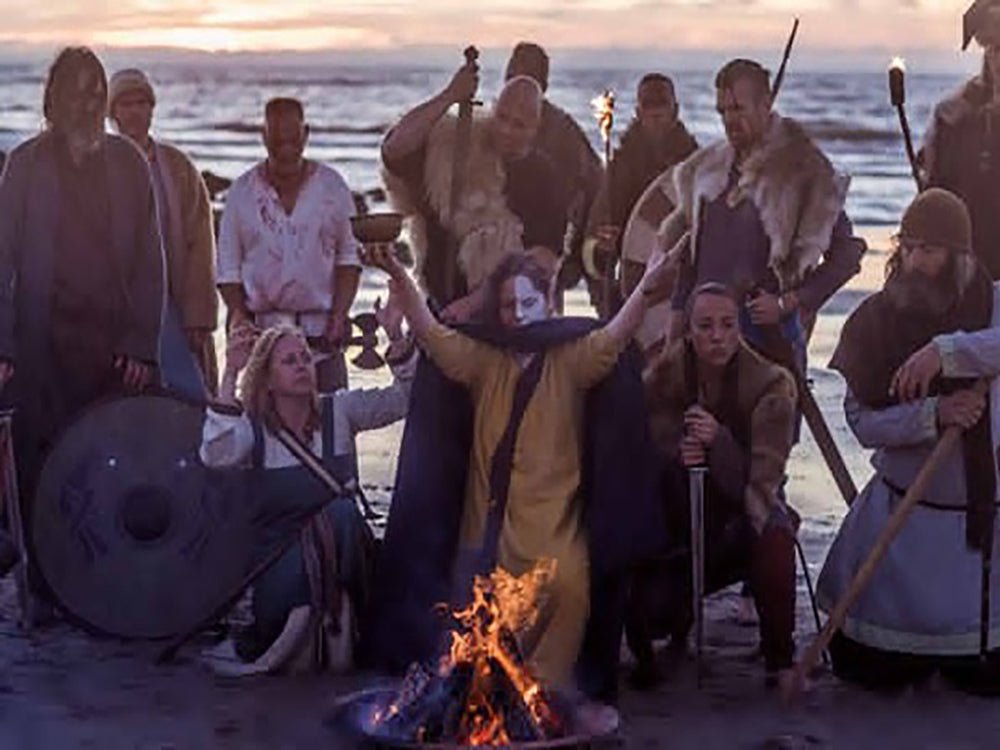
If you look at any modern depiction of a Viking, whether that’s in a movie, TV show or even an AI-generated image, you’re more than likely to find yourself looking at a tall, muscular, heavily tattooed warrior. Tattoos have become so central to our image of the Vikings that Norse tattoos are a thriving subgenre of modern body art, adorning the skin of men and women in Scandinavia and beyond.
Here’s the issue though: we don’t actually have any evidence that the Vikings tattooed themselves at all. There’s no mention of tattoos in any saga, and the Vikings didn’t leave behind any written sources about topics as mundane as body art. Obviously, the thousand-year-old bones that we find in Viking graves today can’t tell us whether their former owner had tattooed skin either. So what evidence do we have that Vikings wore tattoos, and how accurate are modern Norse tattoos to the kinds that Medieval Scandinavians may have sported during the Viking age?
Did the Vikings really have tattoos?

Historians have long been debating whether Vikings did or did not tattoo themselves, and the verdict... unsure. The tattooed skin, or lack thereof, has not survived almost 1000 years since the Viking age, so there’s no archaeological evidence to either prove or disprove the theory. There’s also the added challenge that the Vikings wrote very little down, especially when it came to day-to-day topics such as fashion or artwork. Where other civilisations may have left behind a classification guide for tattooed symbols or a fieldwork manual for making natural inks, this kind of knowledge was handed down verbally from generation to generation of Norseman.
That being said, we do have some anecdotal evidence of Viking tattoos from travellers visiting Norse communities. The best known of these comes from Arab emissary Ahmad Ibn Fadlan, whose travel diaries about his encounters with Eastern Vikings in modern-day Russia have provided historians with key insights into several aspects of Viking culture, from funerals to haircuts. According to Ibn Fadlan, every Viking that he met was tattooed from their fingers to the backs of their necks. Their skin was decorated with dark blue images, particularly of trees, and abstract symbols. He also noted that both men and women alike wore eye makeup.
Around the same time as Ibn Fadlan’s account, a Sephardic Jewish merchant (and probably also spy) from Al-Andalus named Ibn Yaqub was writing about his experiences in the Danish city of Hedeby. He also noted the widespread presence of tattoos and makeup for both men and women to ‘enhance the beauty of their eyes.’
Tattooing isn’t mentioned in any Viking source, so the travel accounts by Ibn Fadlan and Ibn Yaqub are the best textual evidence that we have about Viking tattoos. While these are generally taken as very reliable evidence for the existence of tattooing in Viking society, some historians have questioned whether they refer to tattoos as we’d understand them today or temporary body art. Both travellers were writing in Arabic, and there is some debate as to whether the word that is usually translated as ‘tattoos’ might simply mean ‘body marking.’ In this case, the two writers could actually be describing body and face paint, which we know was widely used in Viking society, or a kind of temporary body art similar to henna.
How might Vikings have tattooed themselves?
Even if we don’t have any hard evidence that Vikings tattooed themselves, it’s not far from the realm of possibility. Tattooing was practised in Northern Europe long before the Viking age and is known to have existed in Germanic and Slavic societies that the Vikings encountered. Using evidence from other contemporary societies we can piece together the tools and techniques that the Vikings might have used for tattooing.
To start, Viking tattoo inks would have been made from natural dyes made from materials in the world around them. Substances such as ash, charcoal, kohl and plant fibres could have been mixed to make dark pigments in a variety of shades. Though Ibn Fadlan describes seeing Vikings with green tattoos, it’s more likely that they would have been dark blue. Vikings were known to make an inky-blue dye from wood ash that was cheap and simple to make. If they did tattoo themselves, it’s pretty likely that this kind of dye could have been easily adapted into tattoo ink.
When it comes to tattoo equipment, the Vikings would have likely used techniques such as hand-tapping or hand-poking. These methods, which are used in several indigenous cultures around the world, involve the skin being punctured by a needle or sharp object before pigment is rubbed into the wound. Though that sounds painful, we know that Vikings were able to make painkiller and anaesthetic salves from medicinal plants, so it would have been possible to numb the pain both during and after the tattoo session.
Face and Body Painting
While Viking tattoos remain a mystery, historians generally agree that the Vikings most likely used body and face paint in several aspects of day-to-day life. Archaeologists have unearthed animal hair brushes and sponges thought to have been used to apply body art and think they may have even discovered some 1000-year-old Viking face paint in the grave of a 10th-century Danish seeress.
As well as wearing makeup for aesthetic reasons, it’s thought that face paint was a central part of many Viking rituals, from wedding ceremonies to sacrifices. In surviving examples of Viking art we can see that Norsemen and women often depicted their gods as being covered in runes and symbols while in their human form. Odin, for example, is often drawn with blue facial markings over his eye representing his magnificent wisdom, whereas Thor is depicted with red markings on his body to represent his immense strength. Drawing from the archaeological evidence available and the practices of nearby cultures, some historians have speculated that priests and priestesses may have replicated these markings on their own bodies with paint to harness the power of the gods during rituals.
Viking war paint, though a common trope in TV and cinema, is a more hotly debated topic among historians. Like with tattoos, there's archaeological evidence to either prove or disprove the idea that the Vikings painted themselves before battle. Given the importance of intimidation in Viking battle culture, it seems logical that at least some Vikings may have smeared paint, kohl, or even blood, on their faces to frighten their enemies. It’s also possible that the Vikings might have picked up the habit from the Picts who were known to paint themselves blue before battle.





